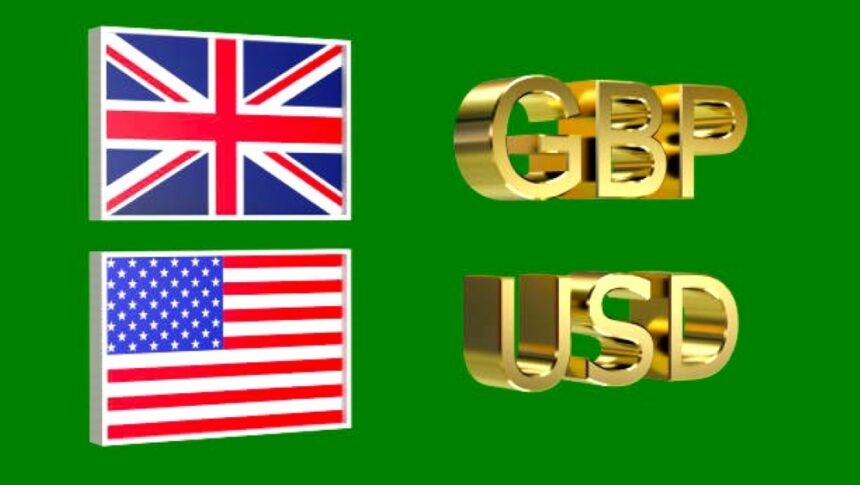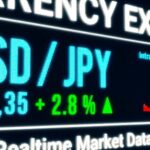Pound Sterling Strengths Surface in a Cautious Market.
The Pound Sterling (GBP) displayed notable strength on Tuesday, outperforming most major peers despite a looming dovish turn from the Bank of England (BoE). With a critical week of monetary policy announcements ahead, investors are assessing both the United Kingdom’s domestic economic picture and the broader global macroeconomic landscape shaped by escalating trade tensions and political uncertainty.
At the heart of this resilience lies market confidence that the BoE will continue to manage the delicate balancing act between supporting growth and navigating inflationary risks. The British currency traded confidently against the US Dollar (USD), Swiss Franc (CHF), Euro (EUR), and Australian Dollar (AUD), although it lagged slightly against the Japanese Yen (JPY), which benefited from its traditional safe-haven status amid global trade unease.
BoE Expected to Cut Rates for Fourth Time Since August
The Bank of England is widely expected to announce a 25 basis point interest rate cut at its Thursday meeting, bringing the benchmark rate to 4.25%. This would mark the central bank’s fourth rate cut since initiating its easing cycle in August 2024, reflecting mounting concerns over slowing economic growth and heightened geopolitical uncertainty.
Analysts at the Commonwealth Bank of Australia (CBA) suggested the BoE may even shift away from its previously cautious approach to policy normalization. “We anticipate the BoE will downgrade its Gross Domestic Product (GDP) forecasts due to the trade war, and there is a risk the BoE may remove the reference to a ’gradual’ cutting cycle,” the CBA analysts noted.
Dovish Guidance Expected Amid Global Trade Pressures
During the March policy meeting, BoE officials had projected a “gradual” approach to interest rate reductions, maintaining flexibility to respond to inflationary or disinflationary trends. However, that forward guidance did not account for the renewed trade war escalation initiated by US President Donald Trump on April 2—dubbed “Liberation Day”—when he imposed sweeping new tariffs on several key global trading partners.
Governor Andrew Bailey acknowledged in a late April speech that the trade environment had “shifted materially,” suggesting the BoE must now incorporate these risks into its economic models. The bank is thus anticipated to provide more downbeat commentary on growth prospects and inflation expectations, further reinforcing dovish sentiment.
Pound Surges on USD Weakness and Policy Divergence
The GBP/USD pair climbed toward 1.3330 during Tuesday’s European trading session, reflecting both Sterling strength and Dollar softness. With the Federal Reserve’s policy decision due Wednesday, investors broadly expect the Fed to hold interest rates steady, maintaining the current target range of 4.25%–4.50%.
This would mark the third consecutive meeting at which the Fed has opted for a pause, highlighting the central bank’s commitment to a “wait and see” approach amid persistent economic ambiguity under the Trump administration. According to CME’s FedWatch Tool, market pricing indicates a near-100% probability that rates will remain unchanged this week.
Fed Faces Trump-Era Economic Uncertainty
While inflation pressures in the US have been elevated, Fed officials have voiced concern that aggressive trade measures could trigger stagflation—a toxic combination of slowing growth and rising prices. The Wall Street Journal’s Nick Timiraos cited sources inside the Fed who warned that higher import tariffs may raise input costs, disrupt supply chains, and curb consumer demand. “At the heart of the issue is the risk of stagflation, triggered by trade-related cost increases and supply chain disruptions,” Timiraos wrote.
Fed Chair Jerome Powell is likely to reiterate the need for patience during the upcoming post-meeting press conference, as uncertainty about Trump’s economic agenda clouds the outlook. The central bank’s dual mandate—full employment and stable inflation—may be challenged if policy-induced shocks stall growth without quelling inflationary pressures.
Trump Tariff Gamble Divides Opinion in Washington
While Fed officials and many private sector economists have flagged trade protectionism as a downside risk, US Treasury Secretary Scott Bessent has publicly defended the administration’s policy shift. Speaking to CNBC on Monday, Bessent said the new tariffs are “designed to correct longstanding imbalances” and could help reignite economic growth.
“We think we can get growth back to 3% by this time next year. That will help bring down the federal deficit by maybe 1% per year,” Bessent said, expressing optimism that Washington’s hardline stance will ultimately benefit domestic industry and reduce America’s reliance on foreign suppliers.
Bessent also hinted that trade negotiations with key partners were progressing. “I am highly confident that 17 trading partners, excluding China, have presented very good trade proposals, and we [White House] are very close to some deals on trade, maybe as early as this week,” he added.
Pound Remains Buoyant Despite Mounting Headwinds
The Pound’s strength in this environment is somewhat counterintuitive. Typically, currencies tend to weaken when central banks cut rates and adopt dovish tones, as lower yields reduce investor appetite. However, in the case of the GBP, several mitigating factors appear to be supporting the currency:
- Market Positioning: Traders had already priced in a BoE rate cut and a more cautious economic outlook, limiting downside reaction.
- Relative Stability: Compared to the uncertainty surrounding US fiscal and trade policy, the UK outlook—though challenged—offers greater visibility.
- Improving Sentiment on Brexit Aftermath: Recent data suggests that UK trade flows are stabilizing post-Brexit, especially with the EU and Commonwealth partners, helping to anchor GBP sentiment.
- Technical Momentum: From a chart perspective, GBP/USD has broken above key resistance at 1.3280, opening the door for further gains.
Japanese Yen the Only Major Gaining Against Sterling
While the Pound outperformed most major currencies on Tuesday, it fell modestly against the Japanese Yen. The USDJPY pair edged lower as investors sought safety in the Yen, reflecting global anxiety over trade policy and equity market volatility.
The Yen remains one of the strongest-performing currencies during periods of market stress. As risk sentiment sours amid concerns about US-China tensions and potential European retaliatory tariffs, the Yen’s appeal as a safe haven remains intact. This has limited Sterling’s ability to rally against the JPY despite strong performance elsewhere.
Conclusion: Pound Bulls and BoE Doves Face Off in Pivotal Week
The British Pound’s current strength underscores a complex interplay of global monetary policy, trade dynamics, and market psychology. As the BoE prepares to ease policy further, its guidance will shape Sterling’s trajectory in the weeks ahead. While dovish shifts generally exert downward pressure on a currency, the Pound’s relative resilience suggests investors are already looking past the rate cut to focus on the broader policy direction and macroeconomic stability.
With the Fed likely to maintain the status quo amid US political and economic uncertainty, the divergence between UK and US monetary policy paths—and the political narratives driving them—could continue to fuel GBPUSD volatility. For now, Sterling’s momentum appears intact, but how long it lasts will depend on Thursday’s BoE tone and how markets interpret the Fed’s message on Wednesday.
https://voiceoftraders.com/analysis/fundamental-analysis/japanese-yen-on-edge-ahead-of-fed-call
[faq-schema id=”39514″]









